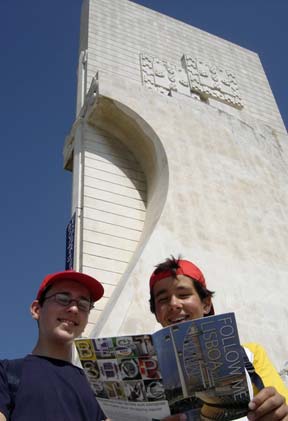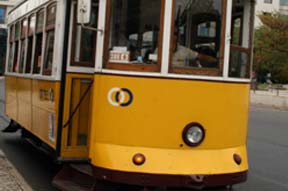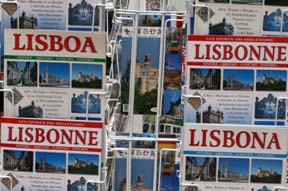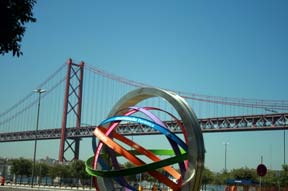 |
Located on the estuary of the Tagus River, on the European Atlantic coast, Lisbon is the most western continental EuropeŌĆÖs capital.
Being PortugalŌĆÖs capital since 1147, Lisbon is becoming more attractive and fashionable than ever! |
Perched on seven hills with winding streets and inspiring view, the city is packed with colourful history, fascinating culture and charming neighbourhoods attracting more and more international students to learn the portuguese language.
Its heart is made up of friendly neighbourhoods all with their own flavour – Alfama, Chiado, Mouraria, Bairro Alto, Estrela, Bel├®m, Ajuda, Carnide Marvila, Alfama, Castelo, Bica and Beato – by having a map youŌĆÖll be able to find your way around easily.
Portuguese History and Culture:
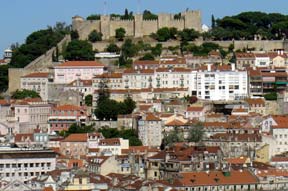 |
Tiles, Fado, Manueline, mosaic pavements, the romance language, the Age of Discovery.
Portugal has a rich culture dating back to prehistoric times, seen in the colorful. |
Celtic-influenced folklore of the north, in the Moorish-influenced Fado music, in its romantic language, distinctive architecture (including its dazzling azulejos and cal├¦adas), painting and distinguished literature, not to mention its welcoming people who have spread its culture around the world ever since the Age of Discovery, and its intriguing History.
St. AnthonyŌĆÖs day ŌĆō Municipal Holiday
In Lisbon, the biggest celebration takes place on June 12th and 13th, in Saint AnthonyŌĆÖs honour. The city’s oldest quarters or neighbourhoods ŌĆō Alfama, Bairro Alto, Castelo, Mouraria, Gra├¦a, Ajuda, Carnide, Benfica ŌĆ” are┬Ā decorated with paper lanterns, garlands and coloured lights.
Using the theme – ŌĆ£LisboaŌĆØ, the twenty participating parades (clubs and associations of LisbonŌĆÖs neighbourhoods) compete for the best parade – music, costume, music and choreography.┬Ā A unique event is performed in Portuguese folk culture – marching, dancing, singing and playing – while descending Avenida da Liberdade. Lisboetas enjoy a colourful party night.
In fact, during the entire month of June – the month of Saint Festivities – Lisbon nights are filled with lively festivities that take over the cityŌĆÖs historic centre and typical neighbourhoods. The streets are filled with the sound of folk music and folk dancing.
There is also the typical grilled sardine on the plate or bread and the traditional basil plant (small pots of fragrant basil are sold in many stalls for the festa) accompanied by a poem in St Anthony honour, LisbonŌĆÖs patron and matchmaking saint.
On June 12, the mayor offers free weddings in Saint Anthony’s Church.
 |
On St. AnthonyŌĆÖs Eve, every bar and club in the district, shuts its doors and moves its drinks to the windows, or on to tables outside.
The streets become one huge party: drinks, music-filled environment and unbelievable friendly crowds. ItŌĆÖs an all-night street fair, party, festivity, live music and all sorts of fun! |
Eating out in Lisbon can be a wonderful experience. Portuguese typical dishes are cultural, imaginative and delicious.
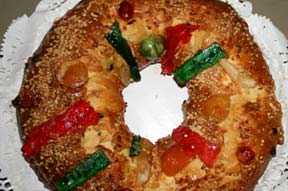 |
From historic old portuguese restaurants to cosy little cafeŌĆÖs and international cuisine, there is a cornucopia to savour in Lisbon.
Enjoy dinner while experiencing the sound of Fado, LisbonŌĆÖs most traditional song, or go to a traditional brewery to taste a steak covered by a real beer sauce. In Carnide area youŌĆÖll find the ŌĆ£Beef on the RockŌĆØ. |
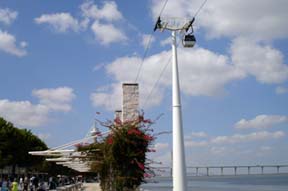 |
Take in some sights on the East end of the city, the Zona Oriental which was completely transformed for ExpoŌĆÖ98, by bicycle or on foot, or take advantage of the endless activities that take place at Parque das Na├¦├Ąes.
Stroll around Rua Augusta for some shopping or visit the Lisbon Zoo, one of the oldest in the World. |
The city has many stadiums and teams are supported with pride. Experience one of its matches.
When the sun goes down, discotheques, pubs, and Fado houses come alive in Lisbon inviting everyone for a good time. Hard Rock Caf├® is also waiting for you.
There are hours of endless fun in Lisbon!
During summer, street environment, festivals, cinema, music and theatre, parades and folk festivities are just some of the events planned for LisbonŌĆÖs days and nights.
The historic district dorm Pra├¦a do Com├®rcio to Baixa-Chiado, the cosmopolitan Avenida da Liberdade, as well as the capitalŌĆÖs avenues and strets will all welcome LisbonŌĆÖs Festivities for all those who live in there and those who visit.
When the sun goes down, discotheques, pubs, and Fado houses come alive in Lisbon inviting everyone for a good time. There are hours of endless fun in Lisbon!
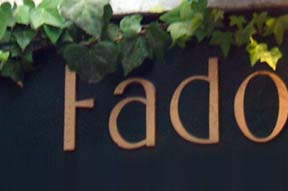 |
For the newcomer, Casas de Fado are a must see in Lisbon. Walking along the winding streets of Bairro Alto, Gra├¦a or Alfama, the weeping guitars invite you to enter a traditional Casa de Fado. Have a traditional codfish dinner washed down by a good Portuguese wine and accompanied by the melancholic voices and weeping guitars that make Fado an unforgettable experience in Lisbon.
If you are in the mood for a more eclectic style, Lisbon’s nightlife is rich in passionate discussions between Portuguese artists, musicians, politicians, as well as intellectuals from all over the world. Walking along the traditional neighbourhoods, the tiny streets are filled with friendly arguments and music. Dancing is a big part of Lisbon’s nightlife. You can count on the modern rhythms next to the Ribeirinha area. |
Lisbon has it all! From famous department shops to street shops and from designer boutiques to modern shopping centresŌĆ” experience the contrast of both modern and traditional Portuguese shops!
Euro (since January 2002). 1 Euro is divided into 100 Centimes. There are coins of 1, 2, 5, 10, 20 and 50 Centimes and 1 and 2 Euros. The notes can be distinguished by their size and colour and have the following face values: 5, 10, 20, 50, 100, 200 and 500 Euros. In Portugal, payments can be made in cash, bank transfer, cheque, credit cards and debit cards.
Lisbon is one of the mildest European Capitals. Spring and Autumn are mild (14 ┬░C average) with sunshine and some showers. Summer months are sunny and hot, though moderated by its location near the sea, with some dry and a little breeze (temperatures between 16 ┬░C to 37 ┬░C). Winters are typically rainy and cool with some sunny days usually staying at an average of 12 ┬░C. Snowfall is a very rare occurrence. On average, there are 3300 sunny hours per year!
230/400 volts, on a 50-hertz frequency. The electric sockets adhere to European standards. Blade plugs (US standard) must be used in conjunction with a 230 volts trnasformer, as well as an adaptor.
Monday to Friday 9am to 6pm. The post offices at Pra├¦a dos Restauradores, Cabo Ruivo and Airport are open on weekends until 8pm, and with restricted timetables on weekends.
Monday to Friday from 9am to 3pm.
Monday to Friday from 9am to 7pm, some pharmacies close at lunchtime. Saturdays from 9am to 1pm. When closed all pharmacies indicate the nearest open pharmacy on duty, where there is one with a 24-hour service.
The Hospital Emergency Services must only be used for serious emergencies. In order to have access to this service, EU citizens who are non-resident in Portugal nust show their passport or ID card and E111 and E112 forms.
1 cm=0,39 inches
1 meter=3,28 feet/1,09 yards
1 km=0,62 miles
1 litre= 0,26 gallons (USA)/0,22 gallons (UK)
1 inche= 2,54 cm
1 foot=0,39 meters
1 yard=0,91 meters
1 mile= 1,60 km
1 gallon (USA)= 3,78 litres
1 gallon (UK)= 4,54 litres
General Emergency ŌĆō 112
Police/Tourism Station at Pra├¦a dos Restauradores ŌĆō 213 421 634/213421623
Fire Service ŌĆō 213 422 222
Trains (CP) ŌĆō 808 208 208
Buses ŌĆō 213 613 000
Metro ŌĆō 217 980 600
Lisboa Airport (arrivals and departures) ŌĆō 216 413 700
ŌĆ£Ask MeŌĆØ Counter Airport ŌĆō 218 450 660
Tourist Helpline ŌĆō 808 781 212
International Calls: 00+country and area code
Portugal Area Code: 351
